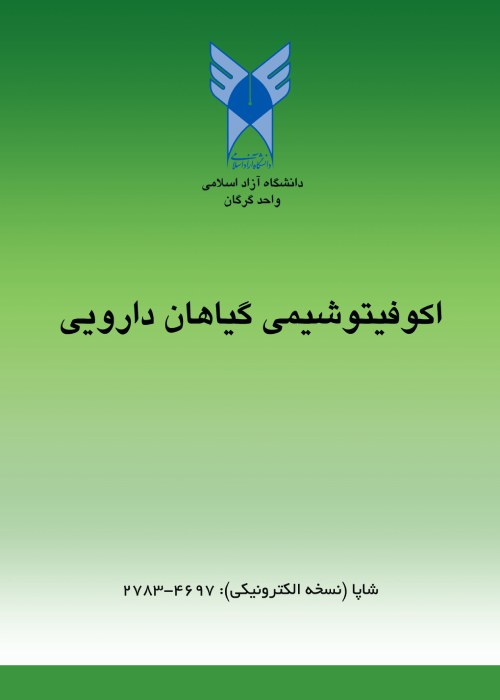Evaluation of morpho-physiological responses of Cymbopogon citratus (DC.) Stapf to the application of chemical and biological fertilizers under salinity stress in Fars and Tehran climates
Plant nutrition from different sources of fertilizers is one of the most critical factors for crop improvement under stress conditions. The purpose of this research was to study the morpho-physiological responses of the lemongrass (Cymbopogon citratus (DC.) Stapf) medicinal plant to the application of different fertilizer sources (control, NPK, nitroxin, mycorrhizal fungi, and biosulfur) under irrigation water salinity stress (0, 100, and 200 mM) in two climates (Fars and Tehran), implemented as a factorial split-plot based on a randomized complete block design in three replications during 2020-2021. Growth and yield attributes and also physiological traits such as photosynthetic pigments, proline content, and qualitative characteristics (essential oil percentage and yield) were measured. Results showed that high salinity concentration (200 mM) negatively affected growth and yield parameters (root dry weight and volume, plant height, number of leaves, and plant yield). The highest plant yield was obtained at 0 and 100 mM salinity with an average of 4183.1 and 4191.9 kg.ha-1, respectively in Fars. Among the fertilizer treatments, there was no difference in terms of plant yield, and all of them led to an increase in yield compared to the control treatment. Using nitroxin biofertilizer under non-stress conditions in Fars region led to the highest total chlorophyll and chlorophyll a, which showed an increase by 51.3% and 47.0%, respectively, compared to the control. Salinity stress (200 mM) and the use of biosulfur in Tehran climate led to an increase in proline content. The use of NPK fertilizer and mycorrhizal fungi under severe salinity stress in Fars led to increases by 2.3 and 2.4 times in essential oil percentage. The lowest average essential oil was also observed in the application of biological and chemical fertilizers in Tehran. The highest essential oil yield was obtained in the application of mycorrhizal fungi under moderate salinity stress in Fars, which was 2.7 times higher compared to the control. All fertilizer treatments at 200 mM level in Fars also had the highest essential oil yield. In general, the lemongrass plant had a good tolerance against the salinity stress of irrigation water and the use of NPK, nitroxin, and mycorrhiza fertilizers while increasing the quantitative and qualitative yield led to the adjustment of the adverse effects caused by the salinity stress.
- حق عضویت دریافتی صرف حمایت از نشریات عضو و نگهداری، تکمیل و توسعه مگیران میشود.
- پرداخت حق اشتراک و دانلود مقالات اجازه بازنشر آن در سایر رسانههای چاپی و دیجیتال را به کاربر نمیدهد.


